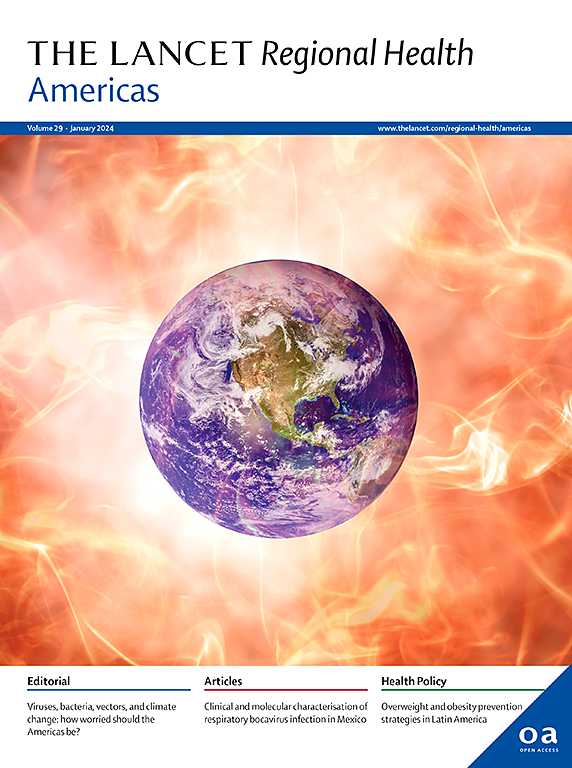哥伦比亚男女死亡率差异:1980年以来基于人口的分析
IF 7
Q1 HEALTH CARE SCIENCES & SERVICES
引用次数: 0
摘要
在全球范围内,女性的死亡率一直低于男性,预期寿命一直高于男性。虽然这种性别差距在高收入国家有充分的证据,但来自拉丁美洲的证据仍然很少。哥伦比亚武装冲突和不平等的历史为研究死亡率的性别差异提供了一个独特的背景。本研究旨在描述过去四十年来哥伦比亚按性别分列的死亡率的长期趋势,研究按年龄组、死亡原因、地理区域和健康保险计划分列的差异。方法采用国家生命统计(DANE)和健康保险记录(BDUA)对哥伦比亚1980 ~ 2023年的死亡率数据进行分析。按照经合组织的指导方针,估计了6个年龄组和20种死因的年龄标准化死亡率。计算死亡率比(MRRs)和寿命损失年数,同时使用Lee-Carter模型计算预期寿命。在死亡率方面观察到持续且不断扩大的性别差异。1980年代至2020年代期间,男性年龄标准化死亡率从每10万人591人下降到437人,而女性死亡率从445人下降到287人。死亡率差距在20世纪90年代达到顶峰(MRR, 1.58; 95% CI, 1.58 - 1.58),并在21世纪20年代保持高位(MRR, 1.52; 95% CI, 1.52 - 1.52)。最大的差异发生在15-59岁年龄组,主要是由于外部原因,其中男性死亡率高出874%(在2000年代)。在老年人中,慢性病导致了这一差距。安蒂奥基亚、瓜维亚雷和阿劳卡等受冲突影响地区的差异最大。哥伦比亚持续存在的基于性别的死亡率差距可能反映了诸如暴力、社会不平等和结构性护理障碍等背景因素的相互作用。降低男性,特别是年轻男性的过高死亡率,可能需要有针对性的、促进性别平等的政策,其中包括预防暴力、加强卫生系统和解决社会不平等问题的战略。本文章由计算机程序翻译,如有差异,请以英文原文为准。
Differences between male and female mortality in Colombia: a population-based analysis since 1980
Background
Globally, women have consistently exhibited lower mortality and higher life expectancy than men. While this sex gap is well-documented in high-income countries, evidence from Latin America remains scarce. Colombia's history of armed conflict and inequality presents a unique context to examine sex differences in mortality. This study aims to describe long-term trends in sex-specific mortality in Colombia over the past four decades, examining differences by age group, cause of death, geographic region, and health insurance scheme.
Methods
We analysed Colombian mortality data from 1980 to 2023 using national vital statistics (DANE) and health insurance records (BDUA). Age-standardised mortality rates were estimated across six age groups and 20 causes of death, following OECD guidelines. Mortality rate ratios (MRRs), and years of life lost were computed, while life expectancy was calculated using the Lee–Carter model.
Findings
A persistent and widening sex gap in mortality was observed. Male age-standardised mortality declined from 591 to 437 deaths per 100,000 between the 1980s and 2020s, while female mortality declined from 445 to 287. The mortality gap peaked in the 1990s (MRR, 1.58; 95% CI, 1.58–1.58) and remained high in the 2020s (MRR, 1.52; 95% CI, 1.52–1.52). The largest disparities occurred in the 15–59 age group and were primarily due to external causes, where male mortality was up to 874% higher (in the 2000s). In older adults, chronic diseases drove the gap. Conflict-affected regions such as Antioquia, Guaviare, and Arauca showed the highest disparities.
Interpretation
Colombia's persistent sex-based mortality gap likely reflects the interplay of contextual factors such as violence, social inequality, and structural barriers to care. Reducing excess male mortality—particularly among young men—may require targeted, gender-responsive policies that incorporate violence prevention, health system strengthening, and strategies to address social inequities.
Funding
None.
求助全文
通过发布文献求助,成功后即可免费获取论文全文。
去求助
来源期刊

Lancet Regional Health-Americas
Multiple-
CiteScore
8.00
自引率
0.00%
发文量
0
期刊介绍:
The Lancet Regional Health – Americas, an open-access journal, contributes to The Lancet's global initiative by focusing on health-care quality and access in the Americas. It aims to advance clinical practice and health policy in the region, promoting better health outcomes. The journal publishes high-quality original research advocating change or shedding light on clinical practice and health policy. It welcomes submissions on various regional health topics, including infectious diseases, non-communicable diseases, child and adolescent health, maternal and reproductive health, emergency care, health policy, and health equity.
 求助内容:
求助内容: 应助结果提醒方式:
应助结果提醒方式:


